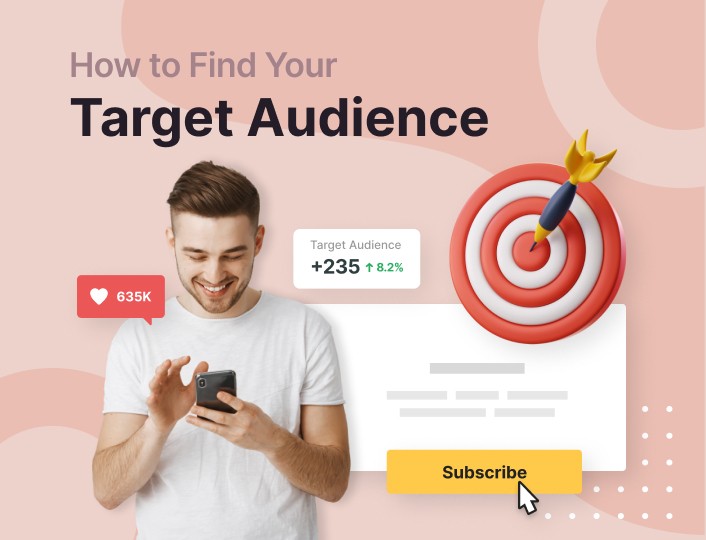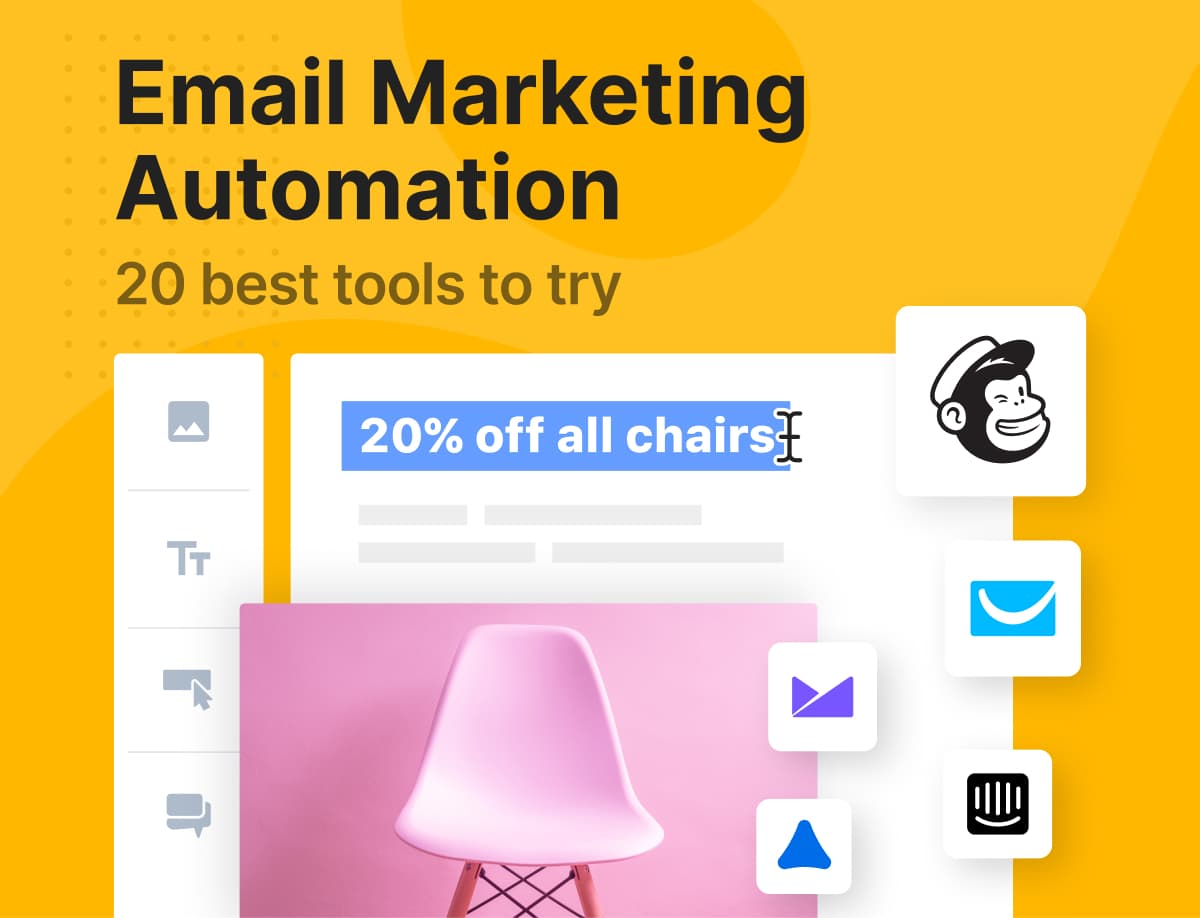Knowing how to find your target audience is key to succeeding not just in business, but also in whatever endeavor you pursue: music, painting, YouTubing, blogging, etc.
By target audience, I mean people who will most likely take a keen interest in what you have to offer.
Why is this important? Well, there are many reasons I will like to give – which we will get to shortly – but the most prominent is this: not everyone is your customer.
Not unless you’re ready to waste your limited time and resources trying to make them one.
Know this simple truth and you will know peace.
Thankfully, finding the right people who are interested in your business, blog, YouTube channel, etc. isn’t rocket science. Neither is it for people with Einstein-like IQ. Just about anybody can do it.
This is why we’ve put together this post: to help you find your target audience in your marketing endeavors.
Here are the key points we shall be discussing:
- What is a target audience?
- Buyer persona: how is it different from a target audience?
- Why is finding your target audience important?
- Before setting Out to Find Your Target Audience
- How to find your target audience on Facebook/Instagram
- How to find your target audience via Google ads
- Reddit marketing
- Quora
- Audience segmentation
- Segment your audience with Adoric
- Conclusion
What Is a Target Audience?
So, I was perusing Facebook the other day (hey, all work and no play makes….) spying on my crushes, checking which of my friends just got married, and watching Tom and Jerry video clips.
Then I saw this ad from Google.
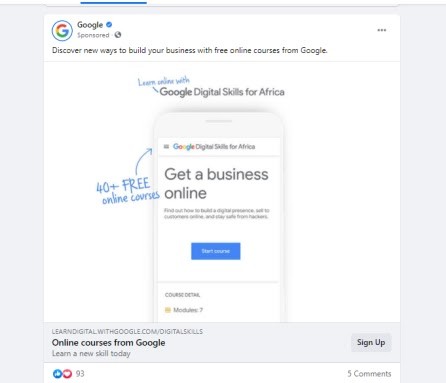
I was one of the few people that Google asked Facebook to show this ad to.
Why? The nature of my job naturally makes me a digital marketer.
I spend most of my time on digital marketing blogs trying to improve my knowledge and skills to reposition Adoric for better success.
Suffice to say that Google studied my browsing history and figured out that I will most likely be interested in a digital marketing course.
Now, you can rightly say that I am Google’s target audience. What an honor!
Okay, you are not Google and neither do you sell digital marketing courses. How do you then identify your target audience?
Technically speaking, a target audience is a select group of persons for who a marketing campaign is intended.
Here’s how Wikipedia puts it:
A target market is a select group of potential or current consumers, which a business decides to aim its marketing and advertising strategies at in order to sell a product or service
Oftentimes, this “select group” is defined based on criteria such as:
- Age
- Geographical location
- Interest
- Browsing habits
- Income bracket
- Gender
- Profession
The list is just endless.
Like in my case with Google, I have an interest in digital marketing.
Parameters for Defining Your Target Audience
Let me now make an illustration. Say you sell an Udemy course (Grrh! Not another course again) that teaches people how to code, and want to run a Facebook ad to promote it.
What set of people will you target? While there are no definite criteria for defining them, the following will suffice:
- Millennials aged 18 – 30
- People who have shown interest in topics like Javascript, Python, etc.
- Males (they tend to take more interest in coding than females)
- Young professionals
- Computer science degree holders
- People that have a laptop computer
To name but a few. This set of people will most likely fit into your buyer persona.
Wait…wait…wait! Buyer persona? Isn’t this supposed to be about target audiences? What is the deal with a buyer persona?
What Is Buyer Persona, and How is it Different from Target Audience?
Target audience, buyer persona…they all refer to any group of persons who you are looking to sell to, and will most likely be responsive to your marketing campaigns. But both terms aren’t really the same.
While the term target audience is used to define a broad subset of potential customers, buyer persona, however, is much more specific and narrower.
An illustration will definitely help.
Take the Udemy course example I outlined earlier. Your target audience can be something like this:
Persons living in California, aged 18-30, within the income bracket of $12,000 – $35,000, male.
You see, that’s fairly broad.
And for buyer persona, you can start with a fictional character. Say, Alexandra.
Alex lives in New York. Has bought a course before on Udemy. Also, she has a degree in computer science. Spends a lot of time watching tutorial videos on YouTube. Aged 25, married.
That’s a lot more specific and narrower, isn’t it? Well, that’s what a buyer persona is all about.

Okay, the focus of this post isn’t about how a target audience differs from a buyer persona, but actually how to find them. So, let’s get back on track.
Why Is Finding Your Target Audience Important?

Let me tell you a little story.
Earlier on in my digital marketing career, I used to have a travel blog. It was an affiliate website of some sort.
Problem was, I knew little about running travel blogs. And, as hilarious as it may sound, up until then, I had never really traveled much. I just wanted to make money 😅😆
After launch, I created a dozen blog posts or so, weaved affiliate links into them, and then published. Afterward, I went gaga with Facebook ads in the bid to get people to read my posts and click the links in them.
I promoted the ad to literally “everyone” living in the United States. Was told that is where the money is at.
Needless to say, every dime I spent on those ads went down the drain. I got no clicks, made no money, and my blog didn’t live past the 4th month.
Now, this is what happens when “everyone” is your target audience. You waste money, time, and human resources. More like digging your grave by yourself.
But when you are able to define your target market with precision, you will spend your limited resources efficiently. And see more meaningful results.
Other Benefits of Targeting the Right Audience
In addition to helping you avoid wasting your resources, knowing your audience has several other benefits. They are as follows:
Guide You When Creating a Product
So, you are looking to create and launch a new product into the market. What features should you build into it? Knowing who will use that product will help you answer that question.
Don’t guess, don’t assume. That can be very costly.
Creating a Personalized Experience for Your Customers
Personalizing your visitors’ browsing experience can help boost conversion and ultimately sales. But, you need to know them personally for that to work, hence the need to segment your audience.
Better Conversion and Sales
Ever wondered why Facebook always seems to read your mind? You open your feed, and boom, the sneaker you’ve always wanted to buy popups up on your news feed.
That’s because Facebook advertisers, having studied your browsing history, know that you are a potential customer. And that you will most likely convert. Needless to say, you are their target audience.
When you promote to the right audience, they will naturally convert.
Before Setting Out to Find Your Target Audience
Before setting out to find your target audience on Facebook, Google, Twitter, etc. (which I intend to show you later on), you need to at least know the kind of people that you are looking for.
And not only that, you have to bring something of value to them.
You know why?
The right audience + the wrong product/offer = waste of time
And you sure don’t want that.
With that said, here are some housekeepings you need to do before heading out to hunt for your potential audience.
Create Valuable Products/Offering
Why should people care about your product, content, video…or whatever you are offering? Let me put it in another context: what problem does your offering solve?
If you haven’t answered this question yet, you might be heading for the rocks.
What to do? Spend quality time creating product/content/offers people will find valuable; something that solves their problem, and you are halfway through to victory.
Seth Godin, one of the greatest marketers of the 21st century, once said:
“Don’t find customers for your products, find products for your customers”
Do you get the idea?
Let’s get practical a bit.
Say you blog about dogs and pets generally, and want to get as many eyeballs as possible to your blog website.
What kind of topics should you write on? Maybe an illustration can help you answer that question.
What do you think of these topics:
- “Should I get a pet”
- “Why I love dogs”
Boring and generic, isn’t it?
Now, what about this:
- “10 places to buy quality pet food cheaply”
- “How to treat your cat when she is down with fever”?
Valuable and insightful, right?
That’s exactly my point.
Oh, by the way, I don’t really know if cats suffer from fever. Just making an illustration, you know.
Let’s make progress, we still have a lot to cover.
Conduct Audience Research
Sometimes, until you ask, you may never really know who your ideal customers are and what they want.
When you fail to ask, you fall into the trap of making careless assumptions.
And like T.D jakes rightly observed
“Ignorance is brought by assumptions”
What to do? Get off your butt and conduct research on your audience.
Don’t be like some of the lazy bum marketers out there: 65% of them hardly ever research their audience.
With that out of the way, here are some creative strategies you can use to research your audience:
Conduct a Survey:
There are a couple of ways to go about this.
✅ You can use pop-up boxes on your website, like the one below. Thankfully, Adoric makes creating these survey popups easy.
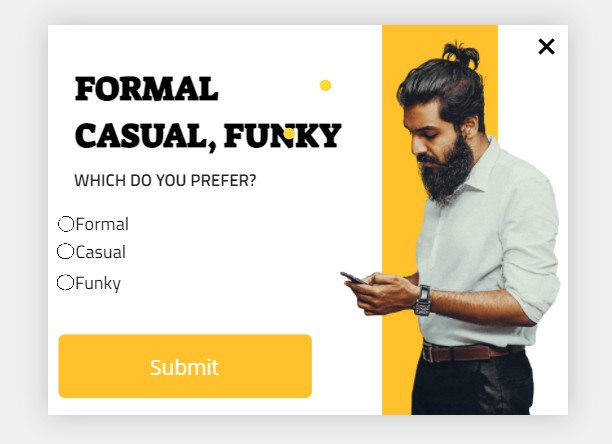
✅ Twitter polls: want to talk to real people about real-life issues? There couldn’t be a better place than Twitter. With Twitter polls, you can get feedback from the very people you are looking to target.
Check Customer Reviews:
What are your customers/users/readers saying about you? This will help you know them better – or know if you’ve been selling to the wrong people all the while.
Don’t have so many people talking about you? Worse, none?
No problems. Just head over to Trustpilot and search for a business you believe their audience closely matches yours. Then look up what people are saying about them.
You will surely glean some meaningful insights.

Take for example this one from Amazon UK. If you noticed, one of their customers complimented them for offering “discounts on numerous items”.
That suggests that if you are in the retail space, offering your customers discounts and coupons will really help.
Competitor Research Won’t Hurt
Spying on your competitors can help you identify your ideal customers, too. This technique is particularly useful when you are looking to fill a gap in the market with your product.
What’s more, when you know who your competitors are targeting, you get to know who to target as well.
Need some suggestions to research your competitors? I will be glad to oblige.
✅Check who they are following and who follows them on Twitter. Perhaps, Instagram.
✅Use BuiltWith: Let’s say that you’re building a software similar to that of your competitor. Do you want to find the people actually using their software, and probably steal them? BuiltWith can help.
✅Check their Facebook Group: Does your competitor have a Facebook group? If they do, that’s where their target audience congregates.
How to Find Your Target Audience
Alright, with all the preambles taken care of, let’s get to the main gist of this post: techniques for finding the right people for your business.
Before going any further, it’s important I put this out: there’s no singular method to find your target audience. As a matter of fact, there are a zillion methods you could use.
However, I have cherry-picked the best 5. These are strategies I believe are easy to follow, and won’t leave holes in your pockets.
They are as follow
How to find your ideal audience on:
- Facebook/Instagram
- Google ads
- Quora
Buckle up.
How to Target the Right Audience on Facebook/Instagram
Isn’t Facebook old and outdated? C’mon, there are sexier, newer social sites like TikTok, Snapchat, etc.
Why spend your ad dollars on Facebook?
Well, Facebook might be old but it still pulls weight, particularly for marketers.
Little wonder why over 200 million businesses still use Facebook to connect with their customers.
With that said, let me show you how to reach your potential customers via Facebook ads. Emphasis on the “ad”. Organic marketing won’t be of any help here.
If you tried using organic marketing (posting to your Facebook page and people finding your post naturally) to reach them, you’d be wasting your time.
Before continuing, it’s important you have a fair idea of the people you are trying to reach. Age, occupation, interest, etc.
Don’t know this yet? Revisit this section – I earlier discussed it there.
Alright, where were we before we took a detour? Yes, yes…I was about to show you steps to targeting your audience on Facebook.
Let’s roll!
Step 1: Create a Facebook Page
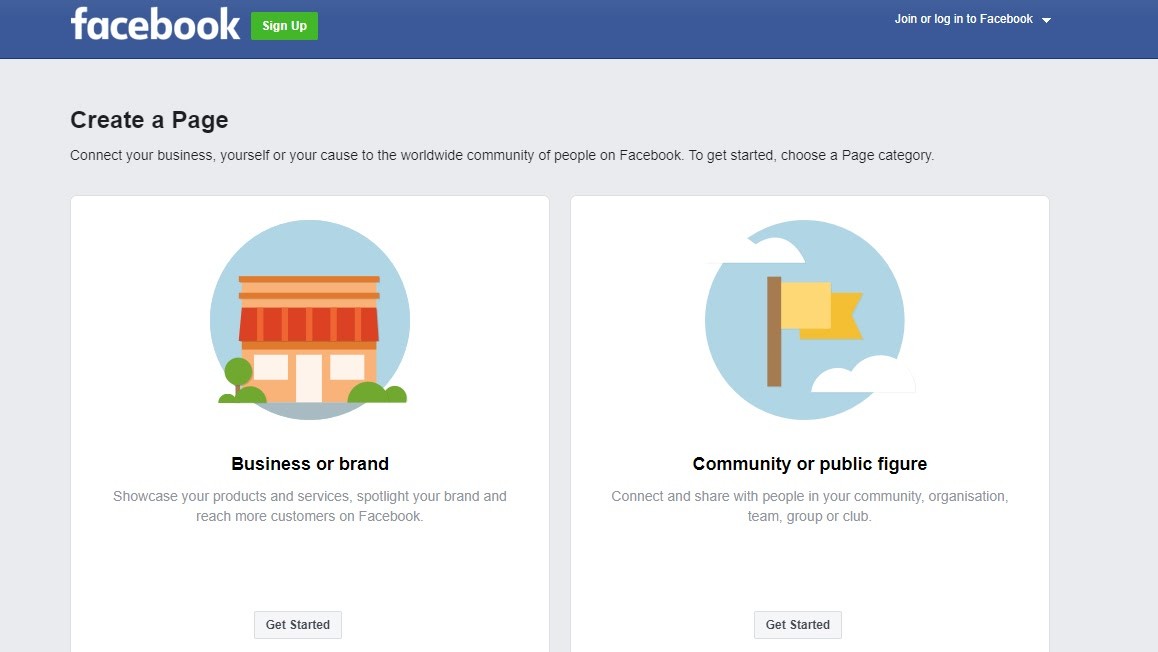
Creating a Facebook page for your business, if you haven’t yet, is the very first thing you need to do.
Ok, you have a personal Facebook profile already. Why give a damn about creating a business page?
Well, the truth is, without a page, you can’t do business on Facebook. Period.
Fortunately, creating one is quite easy. I would have loved to show you how to, but that will take up a lot of real estates here.
So, let me point you to where you can learn how to do so.
Here’s a detailed tutorial from Facebook that I believe you will find really helpful.
Step 2: Create Your Ad
With your business page all set up, the next step now is to create your ad.
But hey, you need to know your objective before even attempting to do that. By this, I mean you need to have figured out what you are looking to achieve with your ad.
That’s a no-brainer, right?
And please don’t tell me you want to create an ad for the sole sake of it. Rather than waste that money, why not give it away to charity.
So, what could your objectives possibly be? Here are a couple of suggestions:
󠄃󠄌1. Drive traffic to your website
󠄃󠄌2. Let as many people as possible know about your business/product
󠄃󠄌3. Get people to make a purchase
󠄃󠄌4. Generate leads – that is, potential customers – for your business
󠄃󠄌5. Drive app installs
Etc.
So, where does your own interest fall?
Well, since the focus of this post is about audience targeting, I will also sublet this part to Facebook: it also has a detailed tutorial that explains this.
Step 3: Select Your Audience
Alright, this is the point things get interesting. This is where you get to tell Facebook the demographic of persons you want to target with your ad.
The next step now is to log into your ads manager account.
PS: You will need to be logged in to your Facebook account for that link to work
PPS: By now, you should have created the ad you are looking to promote.
This is what you will see upon clicking that link:

As you can see from above, you have 3 options for creating an audience: Custom, Lookalike, and Saved Audience.
For this tutorial, we will be going for the third option: Create a Saved Audience. Of course, you can experiment with any of the other two if you so desire.
So, go ahead and click the button. When you do, this interface will show up:

This is where things get interesting.
First set a name for the audience you are looking to create. It can be anything.
Don’t worry about the Custom Audience field since you’ve never created an audience before. I suppose.
Next, is to define your audience based on their geographical location. To do that, click the Browse tab like so:
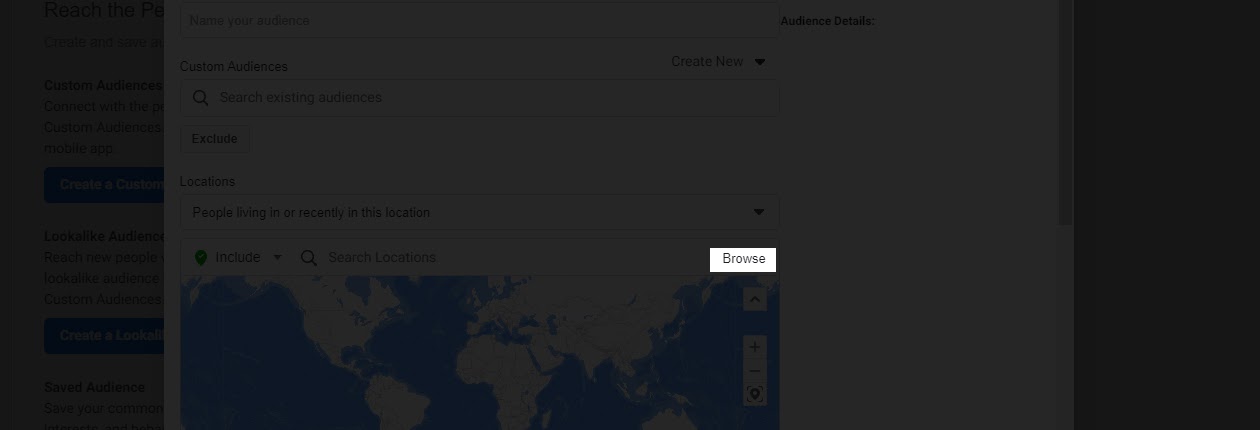
After clicking, select the parameter you wish to use for your targeting: Countries or Regions.

It’s quite an intuitive process so I won’t go much into details.
After selecting your audience’s demographic location, the next step now is to refine your targeting a little more.
Note: Facebook allows you to select multiple locations at a time.
Step 4: Refine Your Audience Targeting
Let’s say you are looking to target people living in California, that audience is still too broad. You might want to narrow it down a little based on age, interest, gender, etc.
To do so, scroll down a little and select your preferred age range and gender.

You could even refine a bit more by selecting the language your target audience speaks.
Do you still wish to do some more fine-tuning? Let’s explore the Detailed Targeting option. This is where you get to define your audience based on their: Demographics, Interests, and Behavior.

I think it’s best you explore this part by yourself. Feel free to do so to your heart content.
Once you are done, click the Create Saved Audience button. And you are done.
You can then use this audience in your Facebook and Instagram marketing campaigns.
How to Find Your Target Audience via Google Ads
Okay, maybe Facebook is not your thing. Perhaps you’ve spent a ton of ad dollars on it and never seen any sales come from it.
If that’s the case, Google might be a better alternative. The coolest part: you can also precisely target your audience via Google ads, just as you would with Facebook.
Let me now take you through the steps for finding the right people with Google ads.
Step 1: Create Your Ad Campaign
Creating an ad is a pretty straightforward process. First, log into your Google ad account. Once logged in, follow the steps outlined by Google to create your ad campaign.
With your ad campaign all set up, it’s now time to tell Google the demographic of people that you are looking to target.
Step 2: Define Your Target Audience
From your ad dashboard, click the Audiences tab
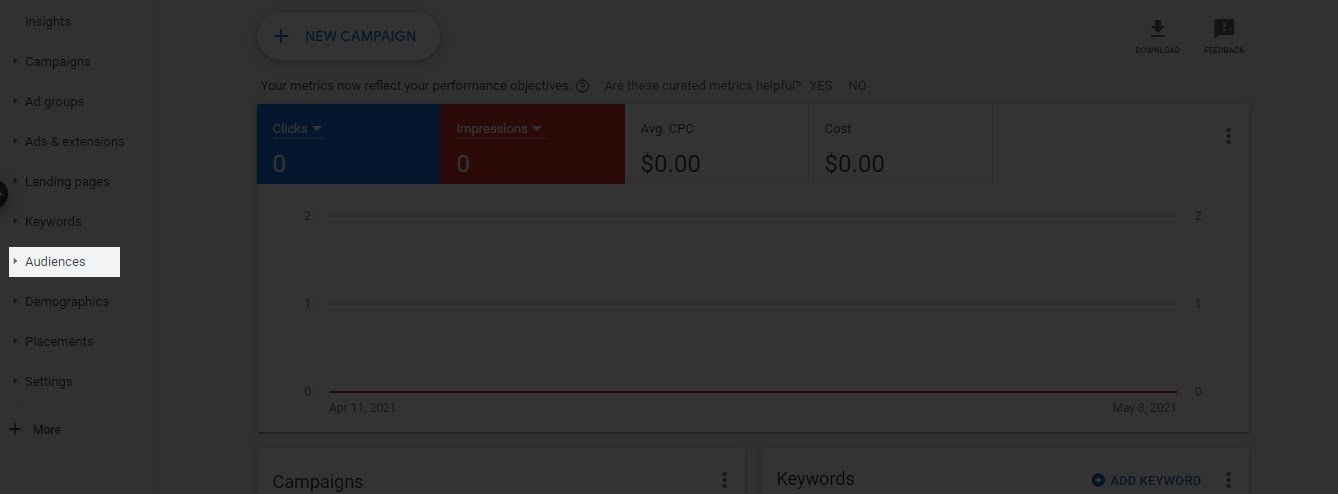
When you do, Google will bring up the audience targeting interface. Click the Browse tab and play around with the targeting options until you find what you are looking for.

Once you’ve defined your audience, you can then go ahead and publish your ad campaign.
And that’s it!
Free Audience Research Options
What if you don’t have the budget for Facebook or Google ads? Does it mean you are doomed for failure already? Certainly not!
Thankfully, there are a couple of free market research tools that you can explore. They work, only that you might have to invest some time into them.
Alright, let’s get started.
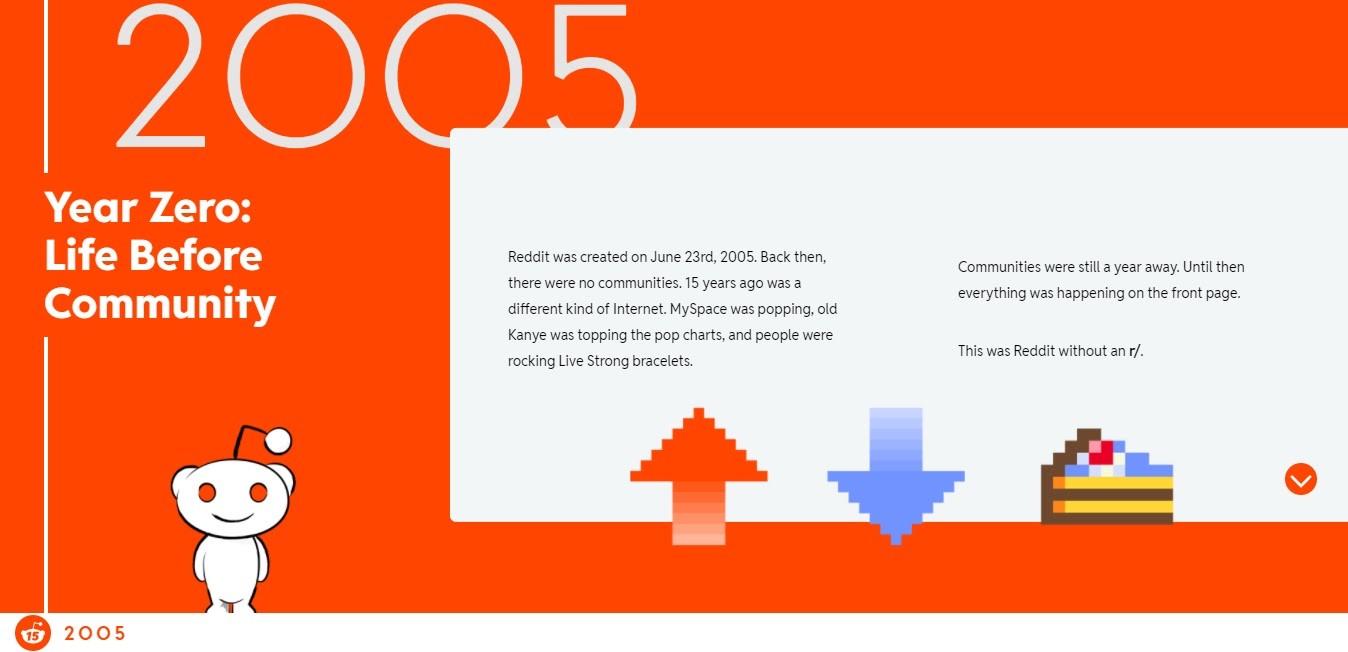
Reddit prides itself as the front page of the internet. And for a good reason: it is home to over 430 million monthly users.
That’s huge! A clear indication that you will most likely find your audience there.
But how do you use Reddit to find your ideal audience? Well, the truth is, there is no particular way to go about that. However, I would like to show you one by making an illustration.
Say you want to write a blog post about SEO, and would like to know what your ideal readership will want to see in that post.
Simply head over to Reddit, and in the search bar type “SEO”. Once you do, you will see a list of suggested subreddits on SEO you can join.
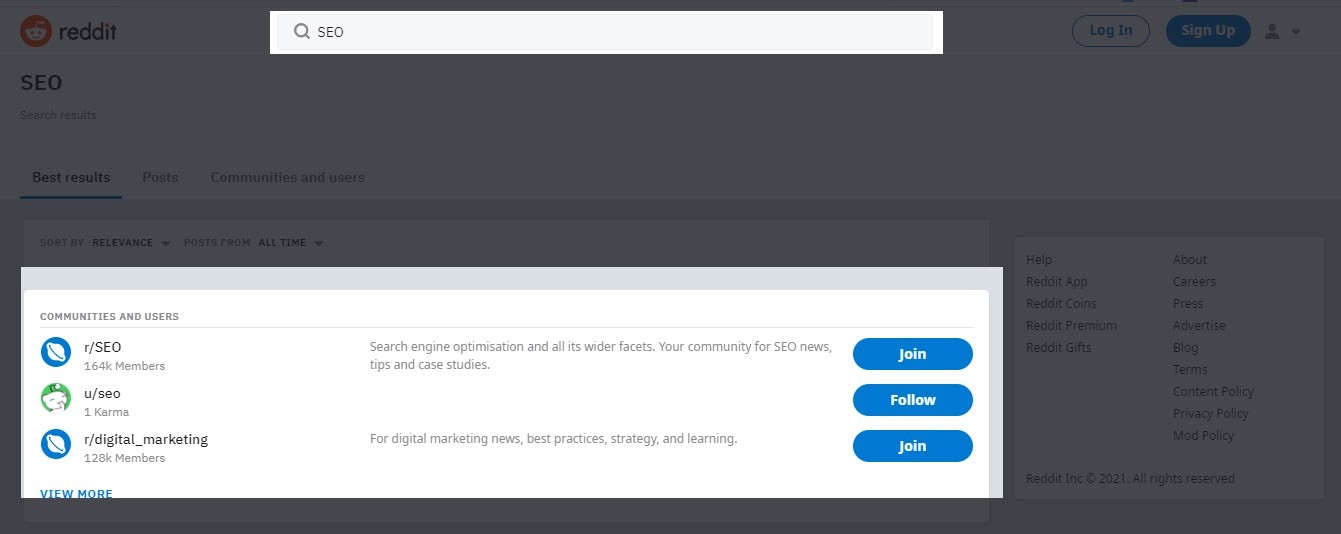
Find one that suits you and join. Doing so will give you an opportunity to participate in group discussions. And when you do, you will get to understand what your target audience are looking for.
Alternatively, you can go through posts made by Reddit users to know what they really want.

You will surely glean some meaningful insights
P.S: You can also run paid ads on Reddit if you so please, just as you would on Facebook and Google.
Quora
What better way to get into the mind of your targeted audience than by listening to the questions they ask? It’s by doing so that you get to figure out what they really want.
This is where Quora comes in handy. It’s a question-and-answer site that is as equally popular as Reddit.
Let’s use the SEO illustration again.
Head over to Quora, search for that topic and you will see questions users are asking regarding it.
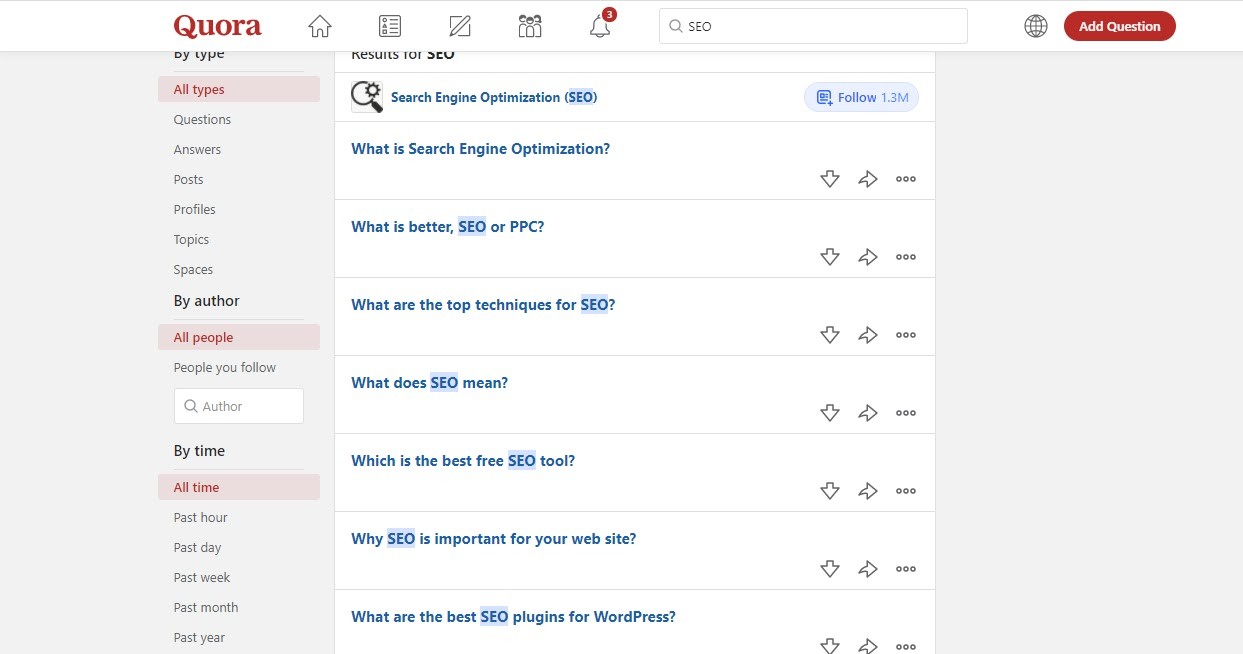
It’s now up to you to do whatever you want with the insights you got.
Did I forget to mention that Quora has quite a number of active monthly users? 300 million to be precise.
Audience Segmentation
So far, we’ve only discussed outbound strategies for identifying and targeting your audience. By outbound, I mean spending money and time going to search them out.
But what if they came to you rather than you going to look for them?
Or, let me say it another way. What if your potential audience are coming from your website and not through Facebook, Google ads, or Reddit?
Wouldn’t that be nice? Of course, it would.
Unfortunately, not everyone coming to your website will fall into your definition of “ideal audience”. How then do you sift through that traffic to get to the right set of people?
Simply via audience segmentation.
As the name suggests, audience segmentation involves grouping visitors to your website into segments based on parameters like geo-location, age, language spoken, device type, etc.
Okay, you get it. But what’s the deal? I mean, why should you bother about segmenting your audience?
For one thing, segmenting your audience gives you a chance to personalize their experience.
Take for example you want to run a Halloween promo campaign on your website. The best segment of audience to target would be those coming from the U.S where Halloween is popular.
Secondly, segmenting your audience allows you to fine-tune your marketing message in a way that resonates well with them. This means better engagement, and thus, more sales for you.
Segment Your Audience with Adoric
Now that we’ve dealt with the “why” of audience segmentation, let’s now look at the “how”. How exactly do you go about segmenting your website traffic? Simple. With Adoric!
Adoric makes segmenting your audience easy peasy, lemon squeezy. And you can do so right from our drag-and-drop design editor by simply clicking the Audience tab.
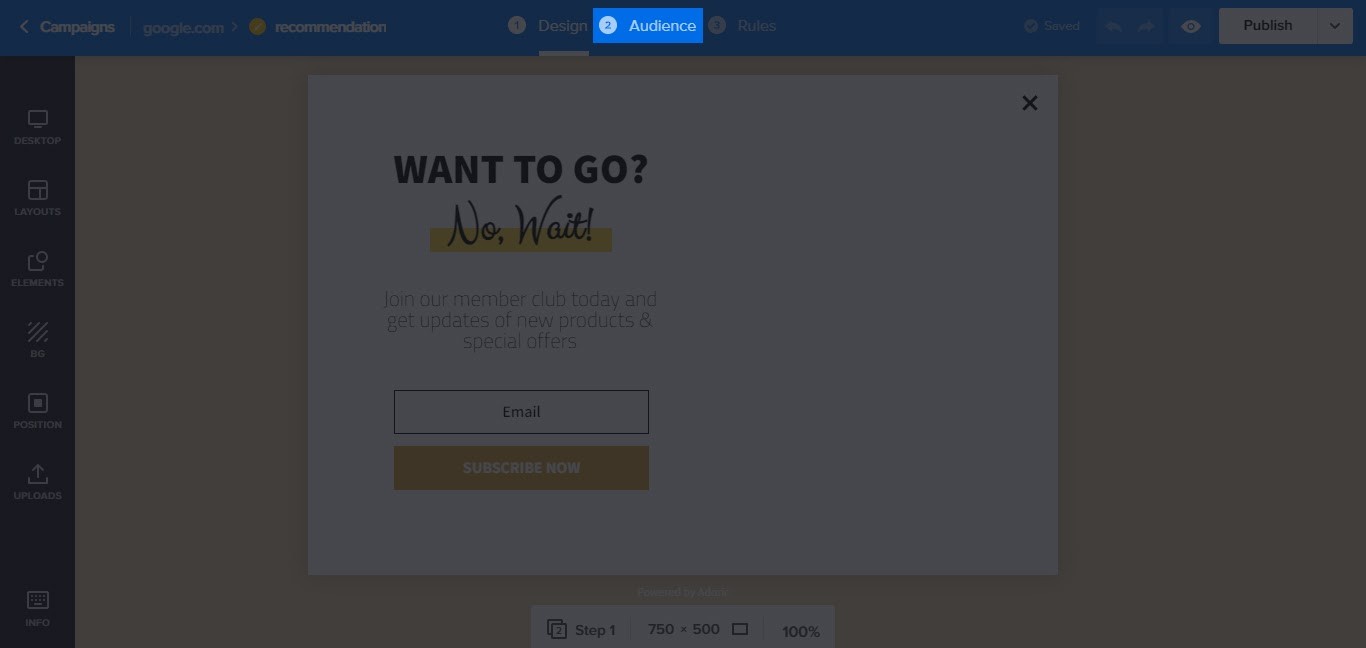
You are at liberty to group your website visitors based on parameters such as type (new or returning), traffic source (how they found your website), browser type, geo-location, etc.

The coolest part, Adoric’s targeting feature is free. This means you can seamlessly segment your website traffic without making any upfront financial commitment.
We’ve got a detailed tutorial that explains how audience segmentation works. So, feel free to always check it out.
Conclusion
Finding the right people for your business, blog, or product is very important. It will save you from wasting your time and money marketing to people who will never take interest in your offering.
It’s my hope that you’ve learned a thing or two about finding them in this post. If you have questions, feel free to reach out to us here at Adoric.

